Two years ago, our world turned upside down. Even though 2022 seemingly feels much more “normal” than the previous two years, it’s understandable to want to continue to play it safe and stay ahead of the next COVID-19 variant.
Over the course of the 20th and 21st centuries, going out to socialize with others over food and drink became an essential part of living in a civilized society. Whether it’s haute cuisine or diner slop, going out to eat allows us to turn a basic biological need into a ritual of communion with friends, neighbors, even strangers. It’s a low-key way to indulge our vices and at the same time elevate our palates. But if a night out at a crowded restaurant doesn’t sound appetizing to you for whatever reason, here’s a crafty alternative that you might find more satisfying.
How Can We Best Recreate the Magic of Our Favorite Restaurants at Home?
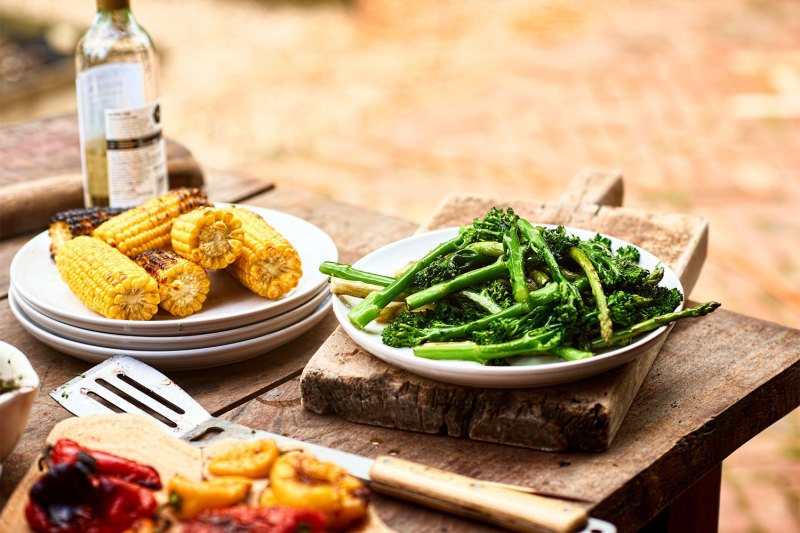
Even though public health restrictions at restaurants are almost all gone throughout America, you’re not “weird” or “crazy” if you still have doubts about doing a wild night out in a bunch of crowded indoor environments. Since our society has more or less switched out community public health standards for individual risk management, it’s up to you to decide how much risk you’re comfortable taking and how you plan to stay safe and healthy. Even if you’re not as worried about COVID-19 itself, you might be feeling the pinch of higher gas prices, or you may simply not be in the mood to worry about planning a big night out.
If you’re getting desperate for the restaurant experience, but you’re still not comfortable with full-fledged indoor dining at restaurants, or if you simply want to do a nice night out without all the hassle of wrangling through snarling traffic and scarce parking for a restaurant that takes limited reservations and has even more limited seating, we have a solution: Dining al fresco at home.
We’re not just talking about eating takeout on your back porch, and we’re not even talking about grilling. Let’s talk about moving the whole operation outdoors: Setting up a camp stove and cooking a proper dinner over an open fire. Hell, why not make it gourmet while you’re at it? This endeavor is all about making cooking interesting again by setting yourself a challenge: To plan and prepare a meal at the height of your abilities, within the unconventional conditions of the outdoors and the limits of your camping gear.
Say What?
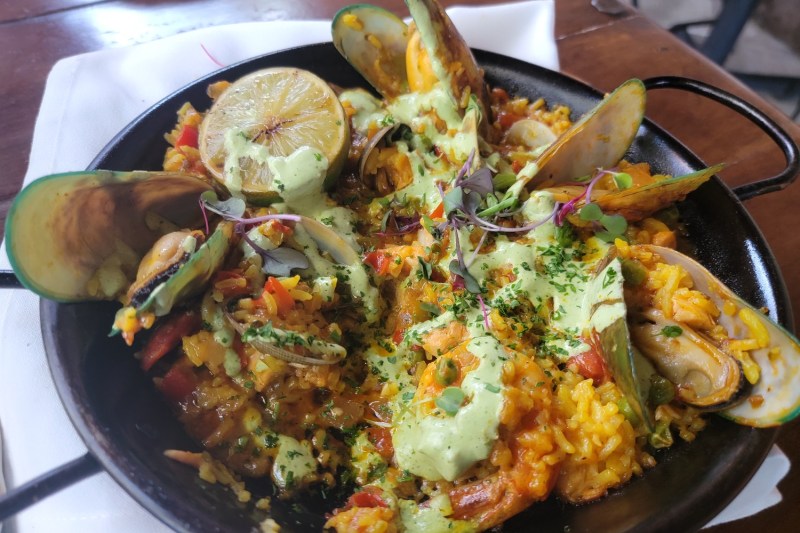
A homemade “al fresco night out at home” spikes the mundane act of cooking with a little Top Chef unpredictability. It forces you to think differently about cooking, like solving a puzzle. And it’s an established fact that everything tastes better outside.
If you’re feeling social, but you don’t feel like going overboard, you can invite some family and friends. The risks of getting COVID-19 are highest in crowded and inadequately ventilated spaces, as the World Health Organization (WHO) explains, so you can worry less about doing smaller outdoor events. In addition, it feels great to watch the sunset over cocktails dessert, and the spring-summer season is simply the best time of the year to spend more time outside.
As tired as we all are of COVID-era gimmicks, this is one novelty that you’ll likely want to bring along into the new life as we know it. Read our tips for al fresco dining, then round up a couple of healthy friends, order a grocery delivery, and get out there to see what you and your camping gear can do.
Stove
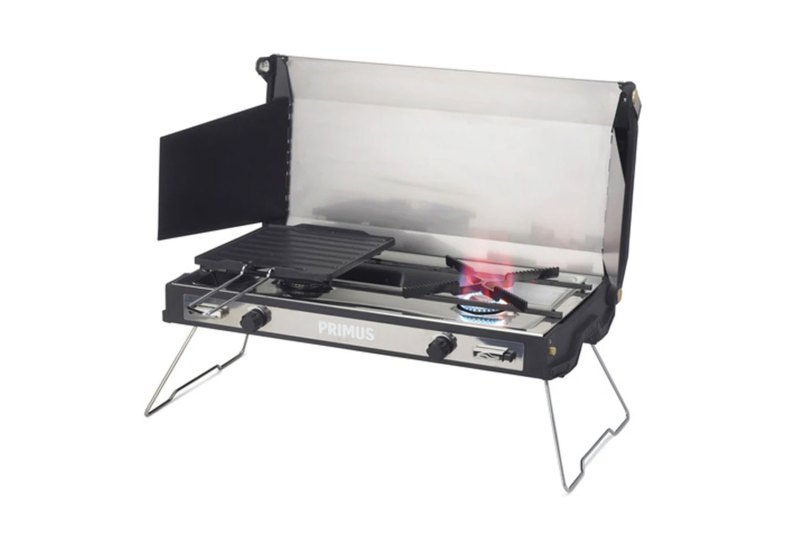
As stated above, the idea here is that you’re going as gourmet as you can with non-gourmet equipment. Back away from the gas grill, the pellet smoker, and the Big Green Egg. Instead, focus on how to make your camp stove perform to the top of its ability.
Of course, there are camp stoves, and then there are camp stoves. We particularly love Primus’ Tupike Stove, which is expressly designed for a kitchen-like experience in the great outdoors. If you’ve historically disdained the trappings of car camping for a backpacker’s spartan setup, bite the bullet already and get yourself a deluxe camp stove like the dual-burner Tupike, or perhaps the BioLite CampStove Complete Kit, which is a marvel of thermoelectric genius that can turn your backyard or patio into a complete outdoor kitchen. Trust us: You will want to use it again, whether it’s for your next picnic at the beach, a tailgate party, your big summer camping trip, or more rustic soirees like the one you’re enjoying now.
Lights
We eat with our eyes first, and you’re going to want good lighting to see your creations. Plus, the right lighting is what turns up the glamour factor on an outdoor meal. Since there’s no packing weight limit, we recommend busting out every option you’ve got, from cafe-style string lights to lanterns to candles in jam jars (here are some of our favorite lights for camping).
Seating

Let’s lay down a universal law: if you don’t have a camp table to pair with your camp chairs, forego the whole setup and opt instead for a blanket on the ground. The reason is obvious: Eating over your lap in a camp chair sucks. It’s fine for gobbling hot dogs and s’mores, but it doesn’t lend itself to enjoying a gourmet meal. By comparison, reclining on the ground is a lot more comfortable and lends itself to eating. (Just ask the ancient Romans.)
Honestly, you’ll want the blanket anyway if you’re planning on a post-meal hang. Just make sure to lay down a tarp underneath to keep you and your dining companion dry and warm, or use a souped-up outdoor blanket that combines both stylish looks and rugged resilience. Elevate the setting by bringing the indoors outside — pile some cushions and a cozy throw or two in the corners of the blanket, to create a more intimate and upscale setting for your fancy meal.
Fire
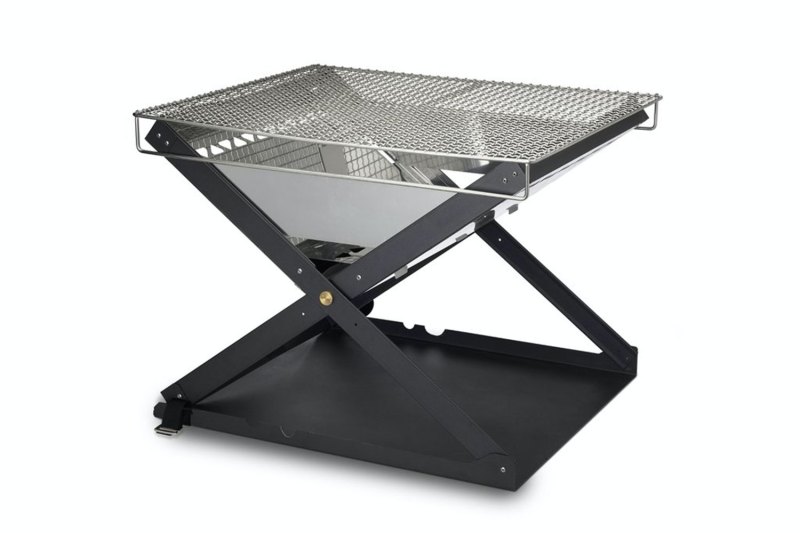
What’s a camp without a fire? If you’re setting up in a place with a fire pit, you’re way ahead of the game already. But if you’re not, you can approximate the experience with a portable fire pit, which offers the added benefit of keeping the telltale signs off your lawn.
Drinks
Sure, you could just crack open a bottle of wine or break out some beer bottles, but why not take the opportunity to turn up? Outdoor-friendly mixology is about striking that perfect ratio between convenience and class — you don’t want to haul an entire bar cart outside, but you do want your dining companion to sip the beverage and be impressed with your resourcefulness as represented in the drink.
For those reasons, we suggest classic two or three ingredient cocktails, such as a Paloma, a whiskey sour, or a Dark and Stormy. With spot-on proportions and a dash of bitters, you’ll enjoy a drink that rivals any from your usual watering hole.
Recipes
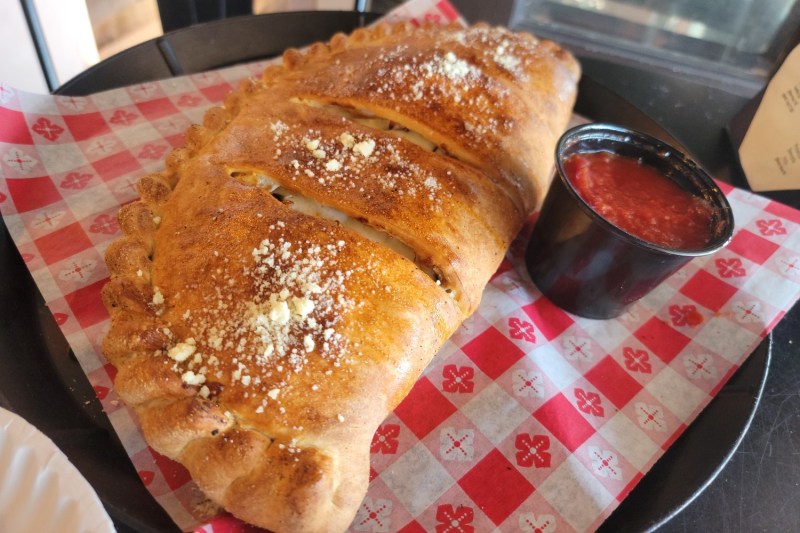
Given the personal challenge nature of this endeavor, we hardly need to say that running back inside for ingredients constitutes cheating. Make sure to plan and prepare well, just as you would if you were making this dinner in the wild. Since you’re cooking on a camp stove, you’re going to need to keep things simple. Fortunately, with warmer spring-summer weather, you have plenty of options for fresh, ripe flavor. Start with a versatile base like pizza dough, pasta, or a forgiving piece of meat or fish, then layer on flavorful marinades, fresh herbs, and texture ingredients like nuts or raw chopped vegetables. For side dishes, you can grill seasonal vegetables over the stove, or even roast them on skewers over the fire like you would a hot dog, then toss them with great olive oil and/or your favorite imported cheese. For dessert, opt for a campfire classic like apple or blueberry crisp, or else elevate a classic s’more with artisanal marshmallows and fancy chocolate.
Clean-up
If you want to get a head start on cleaning up after your outdoor dinner party, fill a big tub or plastic bin with warm soapy water outside, then put all your pots, pans, dishes, and silverware into it when you’re done using them. Not only does soaking your dishes allow you to leave them outside without attracting critters, but you can simply haul the tub back into your kitchen the next day to rinse them down and load them into the dishwasher.
We hope you now have some awesome ideas for your next house party, or perhaps ideas for a romantic “night out” in your own backyard. If you want even more ideas to spice up your meals at home, check out our ultimate guide to the Mediterranean Diet, our new recipes for Middle Eastern-inspired cocktails, some cool new West Coast Barbecue recipes, and our new favorite homemade hot sauce recipes.



